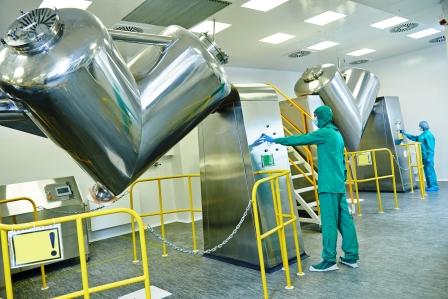S2 Engineering (S2) design, manufacture, install and commission a comprehensive range of custom built Blenders, including V-Type (also known as V-Shell, Vee Cone or Y Cone blenders). Our S2 blenders are ideal for low shear tumble blending of powders and granules and are used extensively in the Pharmaceutical, biotechnology, chemical and live science industry sectors.
S2 V-type Blenders are designed so that they provide an intensive mixing action. As the V-Shell is rotated the powder is repeatedly divided and then mixed together. Product is typically brought to the S2 v-blender in a drum. The drum is secured to the v-shell inlet orifice and then both drum and V-shell are inverted by the blender through 180 degrees. This allows the powder to be able to fall into the V-Shell under gravity. The drum is then removed before blending commences.V-Blenders provide a range of operational benefits as stated below, making them an ideal item of process equipment for batch production in the Pharmaceutical, Food and Chemical sectors.



S2 Double Cone Blenders have the following benefits;
S2 V-Blenders are used in many industry sectors including;
Alternate Materials of Construction: In addition to 304, 316 and 316L Stainless Steel, DCB's can be supplied in a number of different materials of construction including Alloy 20, Alloy 22 and Alloy C276 (Hastelloy C).
Chemical Resistant Coatings: Compared to exotic alloy materials, chemical resistant coatings provide a lower coat of supply solution when processing highly aggressive substances. Our StanCoat high chemical resistant coating is an example of such a coating and this is also conducive for food grade applications.


